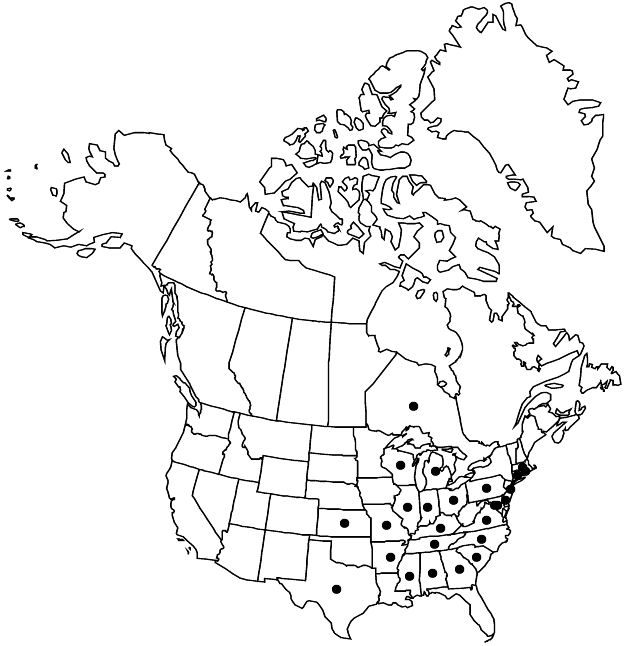Euonymus fortunei
Symb. Sin. 7: 660. 1933.
Vines to 20 m. Stems prostrate to erect, climbing by adventitious-roots; young branches terete, not corky winged. Leaves persistent; petiole 5–10 mm; blade lanceolate, ovate, elliptic, to broadly obovate-elliptic, 1–9 × 0.5–5 cm, base cuneate, acute, obtuse, to rounded, margins crenate-serrate, apex obtuse, acute, or acuminate. Inflorescences axillary, 5–15-flowered. Flowers: sepals 4; petals 4, white to pale green, oblong, 3–4 × 2–3 mm; stamens 4; ovary smooth. Capsules straw colored to orange, globose, 6–8 mm diam., unlobed or very shallowly 4-lobed, lobes clearly connate, surface smooth. Seeds ellipsoid, 4–6 mm; aril orange. 2n = 32.
Phenology: Flowering summer; fruiting summer–fall.
Habitat: Moist woods, stream banks, riverbanks, disturbed areas.
Elevation: 0–300 m.
Distribution

Introduced; Ont., Ala., Ark., Conn., Del., D.C., Ga., Ill., Ind., Kans., Ky., Md., Mass., Mich., Miss., Mo., N.J., N.C., Ohio, Pa., R.I., S.C., Tenn., Tex., Va., Wis., e Asia
Discussion
Euonymus fortunei is widely planted as an ornamental and has escaped widely. Plants grow horizontally until they encounter a vertical surface like a rock, wall, or tree, which they then climb using adventitious roots. They sometimes form dense mats over other vegetation, excluding other plants.
Selected References
None.